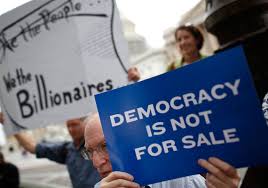The Five Pillars of the New Anti-Corruption Initiative (Part II of III)

The Biden Administration’s new anti-corruption initiative is a significant commitment to the battle against global corruption. According to the Biden Administration, “[c]orruption is a cancer with the body of societies – a disease that eats at public trust and the ability of governments to deliver for their citizens. The deleterious effects of corruption impact nearly all aspects of society.”
At the heart of the new initiative, the Biden Administration recognizes that corruption erodes democracy. The anti-corruption strategy improve the U.S. Government’s ability to prevent corruption, more effectively combat illicit finance, better hold corrupt actors accountable, and strengthens the capacity of activists, investigative journalists, and others on the front lines of exposing corrupt acts.
To guide implementation, the new Strategy organizes U.S. Government anti-corruption efforts to fight corruption under five, mutually-reinforcing pillars:
Pillar One: Modernizing, Coordinating, and Resourcing U.S. Government Efforts to Fight Corruption: The first pillar focus on U.S. Government efforts to coordinate, collaborate and leverage resources across the government and law enforcement to address the national security threat of corruption, including:
- Prioritizing intelligence collection and analysis on corrupt actors and their networks.
- Elevating anti-corruption work as a cross-cutting priority in key departments and agencies across the federal government, including through coordinating bodies at the Departments of State, Treasury, and Commerce, and the U.S. Agency for International Development (USAID).
- Increasing law enforcement resources and bolstering information sharing between the intelligence community and law enforcement

Pillar Two: Curbing Illicit Finance: Corrupt actors and their facilitators rely on vulnerabilities in the United States and international financial systems to obscure ownership of assets and launder the proceeds of their illicit activities. The United States is responsible to address gaps in its regulatory system and promote similar measures by allies and partners:
- Issuing beneficial ownership transparency regulations that help identify bad actors hiding behind opaque corporate structures.
- Enacting regulations to target real estate transactions that are used to hide ill-gotten cash or to launder criminal proceeds.
- Developing legislation with Congress and adopting regulations to focus on important role of gatekeepers to the financial system, including lawyers, accountants, and trust and company service providers, that may facilitate corrupt actors to launder and hide ill-gotten gains.
- Working with partner countries through diplomatic engagement, law enforcement cooperation, and capacity building to strengthen their anti-money laundering regimes.
Pillar Three: Holding Corrupt Actors Accountable: While the U.S. Government shores up regulatory gaps and works with partners and allies to do the same, the United States will increase accountability of corrupt actors by:
- Direct criminalization of foreign government officials who demand or receive bribery payments.
- Elevating diplomatic and development efforts to support, defend, and protect civil society and media actors, including investigative journalists who expose corruption.
- Launching a new initiative to engage partner countries on detecting and disrupting foreign bribery.
- Establishing a kleptocracy asset recovery rewards program that will enhance the U.S. Government’s ability to identify and recover stolen assets linked to foreign government corruption that are held at U.S. financial institutions.
- Collaborating with the private sector to improve the international business climate by encouraging the adoption and enforcement of anti-corruption compliance programs by U.S. and international companies.

Pillar Four: Preserving and Strengthening the Multilateral Anti-Corruption Architecture: The U.S. Government is committed to strengthening the international anti-corruption architecture, which includes multilateral initiatives, commitments, and standards that push countries to make real improvements in countering corruption. The United States will continue to preserve and strengthen this vital architecture, including by:
- Working with the G7 and G20 to implement strong transparency and anti-corruption measures across ministerial tracks.
- Building and expanding accountable, effective, and resilient security institutions to target corruption in finance, acquisition, and human resources functions.
- Reinvigorating U.S. participation across a number of initiatives, including the Open Government Partnership and Extractive Industries Transparency Initiative.
Pillar Five: Improving Diplomatic Engagement and Leveraging Foreign Assistance Resources to Achieve Anti-Corruption Policy Goals: Diplomatic engagement and foreign assistance, including security assistance, are vital to the United States’ efforts to counter corruption. Taken together, these efforts can bolster partner governments’ capacity and will to counter corruption, and support civil society and others engaged in advocacy and action. To safeguard assistance dollars from inadvertently supporting corrupt actors, the United States will improve its risk management processes and better understand local political, economic, and social dynamics. The United States will therefore expand and enhance its efforts, including by:
- Elevating anti-corruption work as a priority within its diplomatic efforts.
- Reviewing and re-evaluating criteria for government-to-government assistance, including around transparency and accountability.
- Expanding anti-corruption focused U.S. assistance and monitoring the efficacy of this assistance.
- Building additional flexibility into anti-corruption initiatives and broader assistance efforts to respond to unexpected situations worldwide.
- Bolstering public sector anti-corruption capacity and support, including to independent audit and oversight institutions.
















1 Response
[…] Source link […]